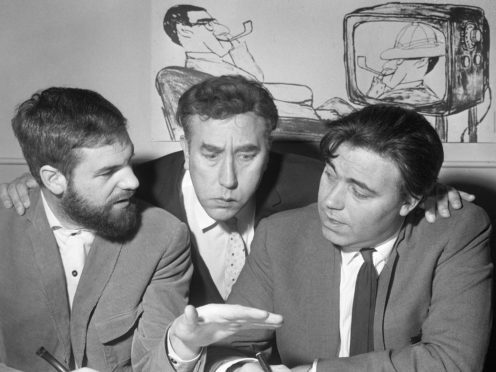Their first attempts at humour came in Milford Sanatorium as they recuperated from near-fatal bouts of tuberculosis as teenagers.
It marked the start of Galton and Simpson, one of the nation’s most successful comedy writing partnerships who entertained millions with Steptoe And Son and Hancock’s Half Hour.
Ray Galton, who died at the age of 88 on Friday, was born in Paddington, west London, on July 17 1930.
After school he worked at the Transport and General Workers’ Union, but was afflicted with the disease and sent to the sanatorium in 1948 at the age of 18.
At one point he had been given weeks to live, and former shipping clerk Alan Simpson had been read his last rites.

But it was there they met and bonded over a love of American humorists, such as Bob Hope and Bing Crosby. “We hit it off immediately,” Simpson once recalled.
They proposed the hospital put on a comedy show, but were told to do it themselves and they began working on sketches.
Thanks to the arrival of antibiotics, they recovered and sent a skit to the BBC on the suggestion of Frank Muir and Denis Norden.
Galton and Simpson went on to work with Tony Hancock and they found their big break with Hancock’s Half Hour, which started on radio in 1954 before a move to the small screen.
Then, in 1962, came Steptoe And Son, about father and son rag-and-bone men living in squalid quarters in Shepherd’s Bush.
Running for 57 episodes, it starred Wilfrid Brambell as “dirty old man” Albert Steptoe and Harry H Corbett as his long-suffering son Harold.

It earned them Writers’ Guild Awards in 1962 and 1963, and they were also celebrated with OBEs in 2000 and a Bafta Fellowship, the Academy’s highest honour, in 2016.
The final sitcom of Galton’s career – during which he worked with stars including Frankie Howerd, Peter Sellers, Leonard Rossiter and Arthur Lowe – was 1997’s Get Well Soon, which was based on his experiences in Milford.
Simpson once said they remained “almost Siamese twins” until he retired from script writing in 1978.
They would continue meeting for coffee and comedy talk until shortly before Simpson’s death aged 87 last year after a battle with lung disease.
With his late wife Tonia, Galton had three children: Andrew, Lisa and Sara.
He battled dementia in his final years before succumbing surrounded by his family.
His manager Tessa Le Bars paid tribute to both men as “the fathers and creators of British sitcom”.
